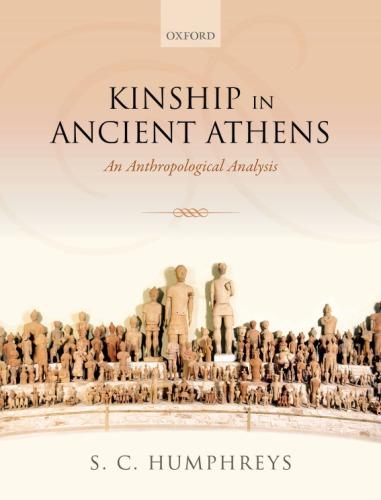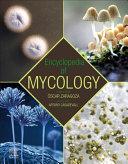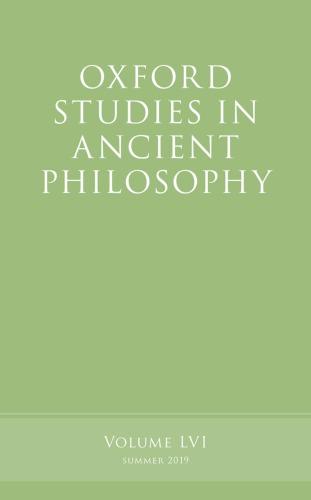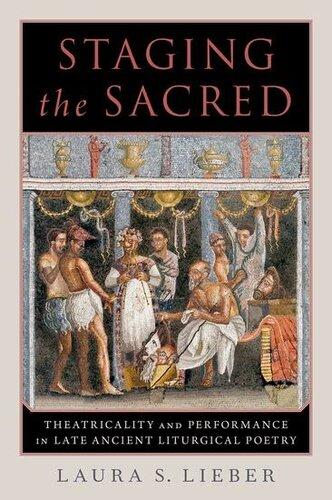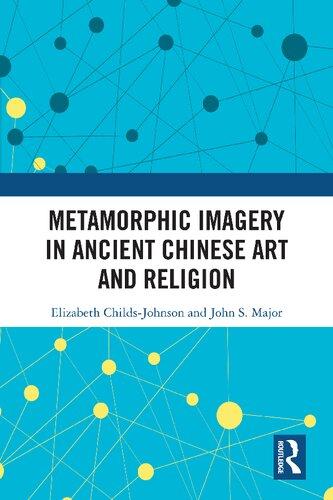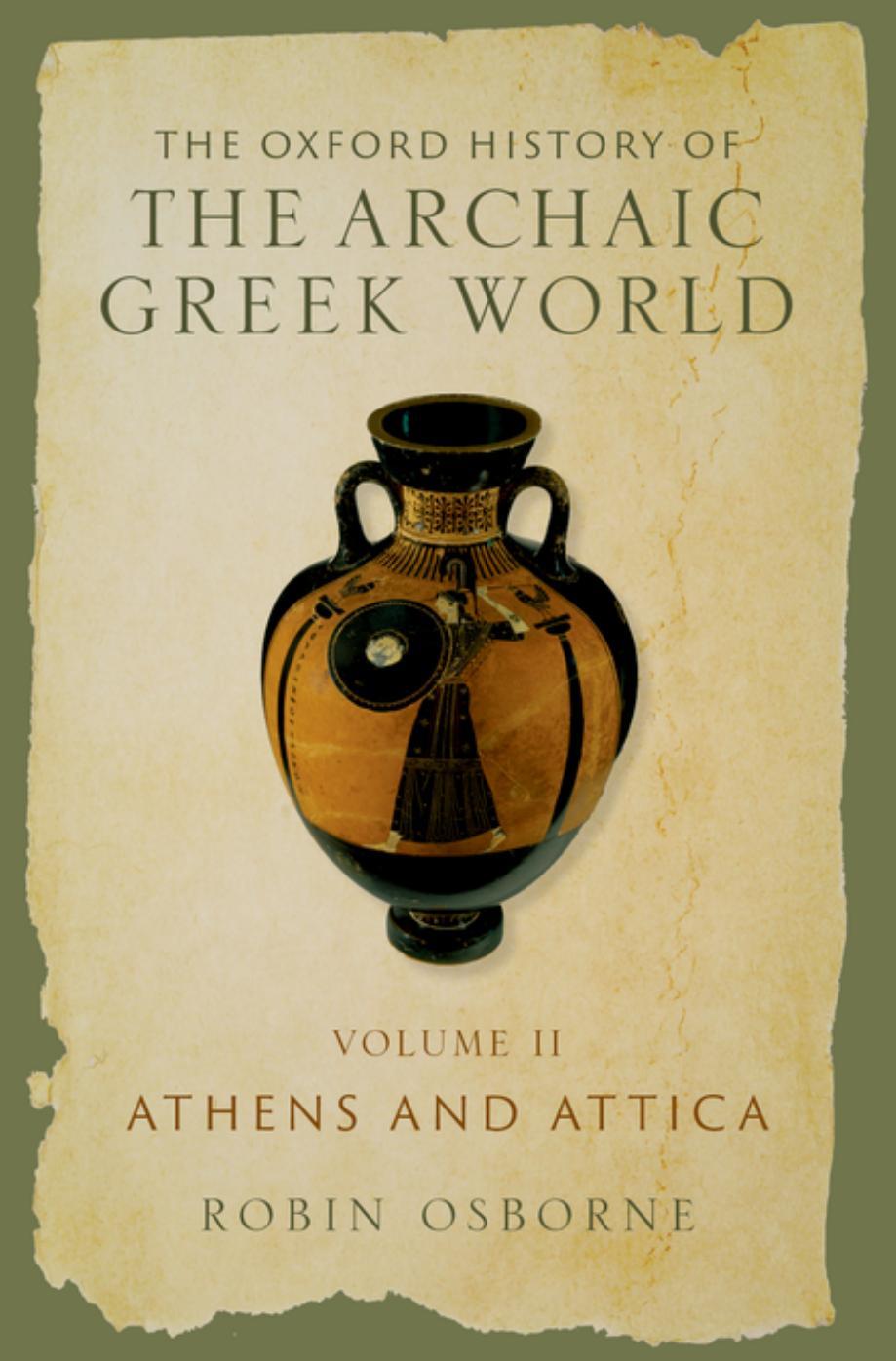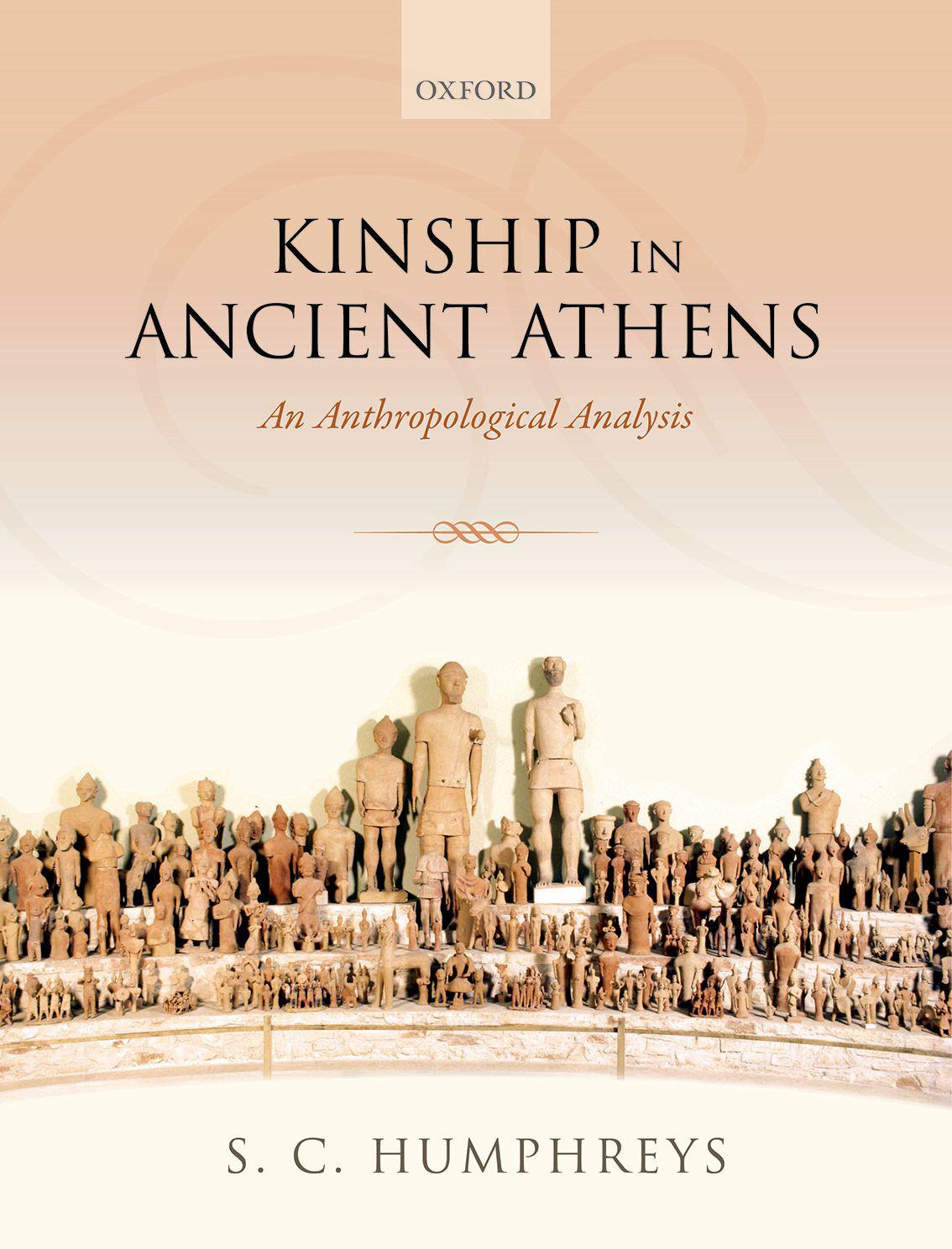Kinship in Ancient Athens
An Anthropological Analysis
Volume I
S. C. HUMPHREYS
Great Clarendon Street, Oxford, OX2 6DP, United Kingdom
Oxford University Press is a department of the University of Oxford. It furthers the University’s objective of excellence in research, scholarship, and education by publishing worldwide. Oxford is a registered trade mark of Oxford University Press in the UK and in certain other countries © S. C. Humphreys 2018
The moral rights of the author have been asserted
First Edition published in 2018
Impression: 1
All rights reserved. No part of this publication may be reproduced, stored in a retrieval system, or transmitted, in any form or by any means, without the prior permission in writing of Oxford University Press, or as expressly permitted by law, by licence or under terms agreed with the appropriate reprographics rights organization. Enquiries concerning reproduction outside the scope of the above should be sent to the Rights Department, Oxford University Press, at the address above
You must not circulate this work in any other form and you must impose this same condition on any acquirer
Published in the United States of America by Oxford University Press
198 Madison Avenue, New York, NY 10016, United States of America
British Library Cataloguing in Publication Data
Data available
Library of Congress Control Number: 2018946424
ISBN 978–0–19–878825–6 (vol 1)
978–0–19–878826–3 (vol 2)
978–0–19–878824–9 (set)
Printed and bound by CPI Group (UK) Ltd, Croydon, CR0 4YY
Links to third party websites are provided by Oxford in good faith and for information only. Oxford disclaims any responsibility for the materials contained in any third party website referenced in this work.
In Memoriam:
Michael H. Jameson
David M. Lewis
Anna Morpurgo Davies
Christiane Sourvinou-Inwood
preface
This book has been a long time in the making and has incurred numerous debts, some to friends no longer here to be thanked.
At various stages Alison Pollard, Nigel Pollard, Ellen Poteet, Liz Potter, and David van Amburg worked as research assistants. Charles Crowther, Stephen Lambert, and Angelos Matthaiou have given help with inscriptions; Angelos Chaniotis supplied advance copies of SEG; Hans Goette kindly spent a day showing me deme sites; Robert Pitt has helped me to keep up with archaeological news from Attika. The libraries of the BSA and ASCS in Athens have been a particularly valuable resource. Helpful comments on chapter drafts, at various stages, have been made by Mike Jameson, Stephen Lambert, David Lewis, Anna Morpurgo Davies, Robert Parker, Rosalind Thomas, Hans van Wees, and seminar participants in too many universities to list.
I am especially grateful to Alison Adams for typing over such a long period, and to Toby Matthews for designing the tables.
Part Three: Politics, Informal
1.
3.
1.1
2.5
2.6 Menander,
2.7 Menander,
2.8 Isokrates
3.1
3.2 Sostratos
4.1
4.2
4.8
4.9
4.10
5.1
5.2
5.3
5.4
5.5
5.6
5.7
7.1
7.2A
7.2B
7.3 Isaios
7.4
7.5 Isaios
7.6
7.7
7.8
7.9
8.2 Onetor of Melite
8.3 Hegesias of Sounion
8.4 [Demosthenes] 38
8.5 Athenodoros of Myrrhinous
8.6 Angele and Myrrhinous
8.7 Agyrrhios
12.1 Myron of Potamos
14.2 Smikythos of Aigilia
15.1 Epidosis in Hellenistic Phokis
15.2 Ostracism, Alkmeonidai
16.1 Euonymon: Strombichos
16.2 Pithos: Kiron
17.1 The priestess of Aglauros
Epigenes and Metagenes
Hierophants
20.4 Priestesses of Athena Polias
23.1 Euonymon: Alexias 817
23.2 Lamptrai: Amoibichos and Geisias 837
23.3 Lamptrai: Timokles 839
23.4 Lamptrai: Thallos 841
24.1 Ikarion: Charidemos 860
24.2 Ikarion: Gorgiades 861
24.3 Ikarion: Akrotimos 862
24.4 Erchia: Isaios 12 871
24.5 Erchia: Euainon 873
24.6 Kydantidai: Prokleides 877
24.7 Halai Araphenides: Mnesippos 882
25.1 Probalinthos: Gyles 897
25.2 Paiania: Aresandros 901
25.3 Paiania: Philodemos 904
25.4 Kytheros: Meritai 915
25.5 Prasiai: Demochares 919
26.1 Skambonidai: Xanthippides 924
26.2 Halimous: Peithias 928
26.3 Leukonoion: Phoryskos 932
26.4 Aithalidai: Kephisodotos 940
26.5 Oion Kerameikon: Lysiades 942
26.6 Phrearrhioi: Sostratos 948
26.7 Sounion: Sosistratos 955
26.8 Sounion: Charias 956
26.9 Sounion: Timesios 957
26.10 Sounion: Stratokles 958
26.11 Deiradiotai: Polystratos 960
26.12 Potamos Deiradiotes: Pankles 962
27.1 Kerameis: Euthyphron 968
27.2 Kerameis: [Eu?]xenos 968
27.3 Prospalta: Euphanes 983
27.4 Prospalta: Sotairos 984
27.5 Kephale: Lysimachos 990
27.6A–D Thorikos: Lysanias, Atarbos, Attabos, Chares 994–6
28.1 Kothokidai: Exekestides 1003
28.2 Heroes of Oineis 1008
28.3 Acharnai: Mnesarchos 1016
28.4 Acharnai: Asteios 1017
28.5 Acharnai: Kephisodotos 1019
28.6 Acharnai: Lysimachides 1022
28.7 Acharnai: Echestratos 1023
28.8 Acharnai: Sostratos 1024
28.9 Acharnai: Naukydes I, Hieronymos I 1025
28.10 Acharnai: Eukles 1026
28.11 Acharnai: Antimachos 1028
28.12 Phyle: Aristoteles 1034
29.1 Melite: Euthydomos 1038
29.2 Melite: Hegesippos 1042
29.3 Xypete: Philon 1046
29.4 Xypete: Euktaios 1047
29.5 Xypete: Antigenes 1048
29.6 Xypete: Diaitos 1049
29.7 Sypalettos: Automedes 1054
29.8 Athmonon: Theodoros 1059
29.9 Athmonon: Aischylos 1060
29.10 Athmonon: Adeistos 1061
29.11 Athmonon: Smikrias 1061
29.12 Athmonon: Pistokles 1063
29.13 Athmonon: Lysias 1064
29.14 Athmonon: Pantakles and Archedemos 1065
29.15 Athmonon: Chairokles 1066
29.16 Aixone: Laches 1073
29.17 Aixone: Kallippos 1074
29.18 Aixone: Lysis 1075
29.19 Aixone: Eukleides 1083
29.20 Halai Aixonides: Diokles 1087
29.21 Halai Aixonides: Eupolis 1089
29.22 Halai Aixonides: Theodotos 1093
29.23 Halai Aixonides: Kallaischros 1095
29.24 Halai Aixonides: Diodoros 1096
30.1 Peiraios: Sophilos 1105
30.2 Acherdous: Phayllos 1117
30.3 Eleusis: Moirokles 1123
30.4 Eleusis: Timokedes 1124
30.5 Hamaxanteia: Teisias 1132
31.1 Phaleron: Philon 1139
31.2 Aphidnai: Charixenos 1144
31.3 Aphidnai: Philochares 1145
31.4 Aphidnai: Diodoros 1150
31.5 Trikorynthos: Adeimantos 1158
31.6 Rhamnous: Timotheos 1164
31.7 Rhamnous: Hieron 1166
31.8 Rhamnous: Phanokrates 1168
31.9 Rhamnous: Protarchos 1169
31.10 Rhamnous: Oikopheles 1170
31.11 Rhamnous: Theophilos and Kleodorides 1172
31.12 Rhamnous: Epandrides 1174
31.13 Rhamnous: Kallias 1175
31.14 Rhamnous: Euphron 1176
31.15 Rhamnous: Philostratos 1177
32.1 Alopeke: Pythodoros 1187
32.2 Aigilia: Sonautides 1196
32.3 Thorai: Gniphon 1198
32.4 Anaphlystos: Olympichos 1203
32.5 Anaphlystos: Alexiades 1204
32.6 Anaphlystos: Leokrates 1204
list of abbreviations
(Abbreviations of journal titles follow L’Année philologique. Anthropologists’ abbreviations for kin terms are acrophonic except that Z = sister.)
AAG
G. M. A. Richter 1944, Archaic Attic Gravestones. Cambridge, MA: Harvard University Press.
AEE S. A. Koumanoudes (ed.) 1871, Attikês epigraphai epitymvioi. Athens: Antoniades (repr. 1993, Archaiologikê Etaireia).
AEE2
S. N. Koumanoudes and A. P. Matthaioiu (eds) 1993, Attikês epigraphai epitymvioi: prosthekai. Athens: Archaiologikê Etaireia.
AG I W. Peek 1954, Attische Grabschriften I. ADAW 1953. 2.
AG II W. Peek 1957, Attische Grabschriften II. ADAW 1956. 3.
AGC M. Petropoulakou, and E. Pentazos 1973, Archaies Ellênikes Poleis 21. Attikê. Athens: Center of Ekistics.
Agora III
Agora XI
R. E. Wycherley (ed.) 1957, The Athenian Agora III: Literary and epigraphic testimonia. Princeton: ASCS.
E. B. Harrison 1965, The Athenian Agora XI: Archaic and archaistic sculpture. Princeton: ASCS.
Agora XIV H. A. Thompson and R. E. Wycherley (eds) 1972, The Agora of Athens. Princeton: ASCS.
Agora XV Meritt, B. D., and J. S. Traill (eds) 1974, The Athenian Agora XV. Inscriptions: the Athenian Councillors. Princeton: ASCS.
Agora XVI A. M. Woodward (ed.) 1997, The Athenian Agora XVI. Inscriptions: the decrees. Princeton: ASCS.
Agora XVII
Agora XVIII
Agora XIX
Bradeen, D. W. 1974, The Athenian Agora XVII. Inscriptions: the funerary monuments. Princeton: ASCS.
Geagan, D. J. † 2011, The Athenian Agora XVIII. Inscriptions: the dedicatory monuments. Princeton: ASCS.
G. V. Lalonde, M. K. Langdon, and M. B. Walbank (eds) 1991, The Athenian Agora XIX. Inscriptions: Horoi, Poletai Records, Leases of public lands. Princeton: ASCS.
Agora XXI Lang, M. 1976, The Athenian Agora XXI: Graffiti and Dipinti Princeton: ASCS.
Agora XXV Lang, M. 1990, The Athenian Agora XXV: Ostraka. Princeton: ASCS.
Agora XXVIII A. L. Boegehold (ed.) 1995, The Athenian Agora XXVII: the Lawcourts at Athens. Princeton: ASCS.
Agora XXXI
M. M. Miles (ed.) 1998, The Athenian Agora XXXI: the City Eleusinion. Princeton: ASCS.
Agora XXXV J. B. Grossman 2013, The Athenian Agora XXXV: funerary sculpture. Princeton: ASCS.
AO
R. Develin 1989, Athenian Officials 684–321 bc. Cambridge: CUP.
A.P. [Aristotle], Athenaion Politeia
APF J. K. Davies 1971, Athenian Propertied Families 600–300 bc Oxford: Clarendon Press.
ARMA II
ARMA IV
A to Z
G. E. Malouchou-Daïliana (ed.) 1993, Archeion tôn mnêmeiôn tôn Athênôn kai tês Attikês II. Athens: Archaiologikê Etaireia no. 136.
O. Vizenou (ed.) 2007, Archeion tôn mnêmeiôn tôn Athênôn kai tês Attikês IV. Athens: Archaiologikê Etaireia no. 247.
S. Kapranides and N. Photes 1997, Athena-Peiraias Proasteia: Chartes-odegos. 23rd ed. Ambelokepoi: Kapranidis and Fotis
BAR British Archaeological Reports. Oxford: Archaeopress.
BArch The Beazley Archive (www.beazley.ox.ac.uk).
BE Bulletin épigraphique, published in REG
BGU Berliner griechische Urkunden. Berlin: Reimer.
CAT Clairmont, C. 1993, Classical Attic Tombstones. Kilchberg: Akanthus (Supplementary Volume, 1995).
CAVI H. R. Immerwahr 1998–2009, A Corpus of Attic Vase Inscriptions, see http://www.lib.unc.edu/dc/attic with http://avi.unibas.ch/home.html.
CEG P. A. Hanson 1983, 1989, Carmina epigraphica Graeca, Berlin: de Gruyter.
CID I Rougemont, G. 1977, Corpus des inscriptions de Delphes. I. Lois sacrées et règlements religieux. Paris: de Boccard.
CIERGA Centre International d’Étude de la Religion Grecque Antique.
Corinth XX C. K. Williams and N. Bookidis 2003, Corinth: the centenary: 1896–1996. Princeton: ASCS.
CSSH
Comparative Studies in Society and History. Cambridge: Cambridge University Press.
DAA A. Raubitschek 1949, Dedications from the Athenian Acropolis Cambridge, MA: Archaeological Institute of America.
DGE E. Schwyzer 1923, Dialectorum graecarum exempla epigraphica potiora. Leipzig: Teubner (repr. Hildesheim; Olms 1960).
dr. drachma/ai
EAA Enciclopedia dell’arte antica (1958– ).
FD Fouilles de Delphes III 1929– . Paris: de Boccard.
FGE D. L. Page 1981, Further Greek Epigrams. Cambridge: Cambridge University Press.
GG W. Peek 1960, Griechische Grabgedichte. Berlin: Akademie-Verlag.
GVI W. Peek 1955, Griechische Vers-Inschriften I. Grab-Epigramme Berlin: Akademie-Verlag.
IC M. Guarducci (ed.) 1935–50, Inscriptiones creticae I–IV. Rome: Libreria dello Stato.
ID I
IEleus
A. Plassart (ed.) [1950], Inscriptions de Délos (1–88). Périodes de l’amphictyonie ionienne et de l’amphictyonie attico-délienne. Paris: Champion.
K. Clinton (ed.) 2008, Eleusis: The Inscriptions on Stone I–II. Athens: Archaiologikê Etaireia.
IEph Ia
IEph IV
list of abbreviations xix
H. Wankel, R. Merkelbach a. o. 1979–81, Die Inschriften von Ephesos (IGSK 11–17). Bonn: Habelt.
H. Engelmann, D. Knibbe, and R. Merkelbach (eds) 1980, Die Inschriften von Ephesos IV. Bonn: Habelt.
IErythrae H. Engelmann and R. Merkelbach (eds) 1972, Die Inschriften von Erythrai und Klazomenai I. Bonn: Habelt.
IG
Inscriptions Graecae 1903– . Berlin: Academy.
IGSK Inschriften griechischer Städte aus Kleinasien, 1972– . Bonn: Habelt.
IGT Koerner, R. † 1993, Inschriftliche Gesetzetexte der frühen griechischen Polis. Cologne: Böhlau.
IIasos
IJurid
IKnidos
IOrop
IPriene
IPArk
ISE
IvO
Kerameikos III
W. Blümel (ed.) 1985, Die Inschriften von Iasos I–II. Bonn: Habelt.
R. Dareste, B. Haussoullier, and Th. Reinach (eds) 1894–1904, Recueil d’inscriptions juridiques grecques. Paris: Leroux.
W. Blümel, Die Inschriften von Knidos (IGSK 4), 1992. Bonn: Habelt.
V. Petrakos 1997, Oi epigraphes tou Ôrôpou. Athens: Archaiologikê Etaireia.
F. Hiller von Gaertringen 1906, Inschriften von Priene. Berlin: Academy.
G. Thür and H. Taüber (eds) 1994, Prozessrechtliche Inschriften der griechischen Poleis I. Arkadien (IPArk). Vienna: SAWW(Ph) 607.
L. Moretti (ed.) 1967, 1976, Inscrizioni storiche ellenistiche I–II Florence: Nuova Italia.
W. Dittenberger and K. Purgold (eds) 1896, Inschriften von Olympia. Berlin: Reimer.
W. Peek 1941, Kerameikos. Ergebnisse der Ausgrabungen III. Inschriften, Ostraka, Fluchtafeln. Berlin: de Gruyter.
Kerameikos V K. Kübler 1954, Die Nekropole des 10. bis 8. Jahrhunderts. Berlin: de Gruyter.
Kerameikos VI. 1 K. Kübler 1959, Die Nekropole des späten 8. bis frühen 6. Jahrhunderts Berlin: de Gruyter.
Kerameikos XII
Kerameikos. Ergebnisse der Ausgrabungen XII. 1980. Rundbauten im Kerameikos. Berlin: De Gruyter.
Kerameikos XIV W. K. Kovasovics 1990, Kerameikos XIV. Die Ecketerrasse an der Gräberstrasse des Kerameikos. Berlin: De Gruyter.
KvA E. Curtius, J. A. Kaupert 1881–94, Karten von Attika. Berlin: Reimer (repr. c.1995, Deme of Glyphada; reduced scale, Korres 2009).
LGPN
LIMC
Lexicon of Greek Personal Names 1987– . Oxford: Clarendon Press (without vol. number = M. J. Osborne and S. G. Byrne, vol. II 1994, Attica).
Lexicon Iconographicum Mythologiae Classicae 1981– . Zurich: Artemis.
LS F. Sokolowski (ed.) 1969, Lois sacrées des cités grecques. Paris: de Boccard.
LSAG
L. H. Jeffery 1961, The Local Scripts of Archaic Greece. Oxford: Clarendon Press.
LSAM F. Sokolowski (ed.) 1955, Lois sacrées de l’Asie Mineure. Paris: de Boccard.
LSJ Liddell and Scott, Greek-English Lexicon, 9th ed., revised by H. Stuart Jones, 1925–40.
LSS F. Sokolowski (ed.) 1962, Lois sacrées des cités greques Supplément. Paris: de Boccard.
MAMA Monumenta Asiae Minoris Antiqua 1928–. Manchester/London: Manchester University Press/Society for Roman Studies.
Mes.–Arg. V. Vasilopoulou and S. Katsarou-Tsevelekê (eds) 2009, Apo ta Mesogeia ston Argosaroniko. Markopoulo: Demos.
Milet I 3
M/L
M–W
G. Kawerau and A. Rehm 1914, Milet I. 3. Das Delphinion in Milet Berlin: Reimer.
R. Meiggs and D. M. Lewis (eds) 1969, A Selection of Greek Historical Inscriptions to the end of the fifth century bc (revised ed. 1988). Oxford: Clarendon Press.
R. Merkelbach and M. L. West (eds) 1967, Fragmenta Hesiodea. Oxford: Clarendon Press.
Nomima H. Van Effenterre and F. Ruzé (eds) 1994–5, Nomima: recueil d’inscriptions politiques et juridiques de l ’archaïsme grec I–II. Rome: École Française.
OCD4 S. Hornblower, A. Spawforth, and E. Eidinow (eds) 2012, The Oxford Classical Dictionary. 4th ed. Oxford: OUP.
PAA
PCG
J. S. Traill, 1994–2012, Persons of Ancient Athens. Toronto: Athenians.
R. Kassel and C. Austin (eds) 1983– , Poetae comici graecae. Berlin: de Gruyter.
PGrVindob Mitteilungen aus der Papyrussammlung der Nationalbibliothek in Wien I, 1932, Vienna: Österreichische Staatsdruckerei.
PHibeh B. P. Grenfell and A. S. Hunt (eds) 1906, The Hibeh Papyri I London: Egypt Exploration Society.
PKöln Kölner Papyri, 1976–2007. Opladen/Paderborn: Westdeutscher Verlag/Schöningh.
PLond Greek Papyri in the British Museum, 1893–1974. London: British Museum.
PMich Michigan Papyri, 1931–1999. Various publishers.
PMünch Die Papyri der Bayerischen Straatsbibliothek München, 1986. Stuttgart: Teubner.
POxy The Oxyrhynchus Papyri. Oxford: Clarendon Press.
PRyl
C. H. Roberts (ed.) 1938, Catalogue of the Greek and Latin Papyri in the John Rylands Library, Manchester III. Manchester: University Press.
Prakt. NA Attikê Praktika tes - - - epistêmonikês synantêseôs NA Attikês 1984– . Attika: various demarchies.
PSI Papiri greci e latini, 1912– . Florence: University of Florence.
R/O
P. J. Rhodes and R. Osborne (eds) 2003, Greek Historical Inscriptions, 404–323 bc (revised 2007). Oxford: OUP.
Sammelbuch Sammelbuch griechischer Urkunden aus Ägypten, 1915– . Berlin: Reimer.
Schwenk C. J. Schwenk 1985, Athens in the Age of Alexander: the dated laws, and decrees of ‘the Lycourgan era’. Chicago: Ares.
SEG Supplementum Epigraphicum Graecum 1923– . Amsterdam: Gieben.
SEMA
Staatsverträge I
Staatsverträge II
Syll 3
TGF 2
TGF III
TGF IV
ThesCRA
Thorikos III
V. N. Bardanê and G. K. Papadopoulou 2006, Symplêrôma epitymviôn mnêmeiôn tês Attikes. Athens: Archaiologikê Etaireia.
H. Bengtson and H. H. Schmitt (eds) 1962, Die Staatsverträge des Altertums I. Munich: Beck.
H. Bengtson and H. H. Schmitt (eds) 1969, Die Staatsverträge des Altertums II. Munich: Beck.
SVF H. von Arnim, Stoicorum veterum fragmenta 1903– .
W. Dittenberger (ed.) 1915–24, Sylloge inscriptionum graecarum, 3rd ed. Leipzig: Teubner.
Nauck, A. (ed.) 1926, Tragicorum Graecorum Fragmenta, 2nd ed. Leipzig: Teubner.
Radt, S. 1985, Tragicorum Graecorum Fragmenta III. Aeschylus. Göttingen: Vandenhoeck & Ruprecht.
Radt, S. 1977, Tragicorum Graecorum Fragmenta IV. Sophocles Göttingen: Vandenhoeck & Ruprecht.
Thesaurus cultus et rituum antiquorum I–V + index 2004–6. Basel: Fondation pour le lexicon iconographicum mythologiae classicae; Los Angeles: Getty Publications.
Thorikos 1965, III. Rapport préliminaire sur la troisième campagne de fouilles; Voorlopig Verslag over de Derde Opgravingscampagne. H. F. Mussche, a.o. Brussels: Comité des fouilles belges en Grèce, 1967. list of abbreviations
key to reading tables
A line of dots and dashes = adoption.
A line of small dashes indicates an uncertain or indefinite number of generations.
Where a name appears in a text only as patronymic, the reference is bracketed.
Δ = male, O = female, □ = unknown gender.
Introduction
It is difficult to write an introduction to a book that has been cooking (growing, unpruned? working to windward?) for about thirty-five years. Disciplines (history, anthropology, archaeology) have changed; imagined readerships have changed and, more sadly, ideal (and actual) readers have died; parts of the analysis published earlier have entered into dialogue with the work of others.1
One of the book’s beginnings was a sail in a ship’s lifeboat, in the 1950s, with Penny Hughes and other friends, from Malta to Greece and round the Aegean.2 This encouraged me to apply for research grants on the basis that our Crab had ‘all the disadvantages of an ancient merchant ship’ (she was also smaller). Research on ancient merchant ships3 raised questions about trade in premodern economies; I discovered that economic anthropologists were asking similar questions,4 and Mary Douglas encouraged me to attend anthropology seminars at UCL. Here I rapidly found (we are in the 1960s) that the core of social anthropology was kinship studies. Kinship had been common ground between anthropology and ancient history earlier (Maine, Fustel, Morgan);5 but anthropology had changed, leaving ancient historians still in the nineteenth century. I formed the idea of writing ‘a new Cité antique’, and gave three lectures on ancient Greek kinship at the University of Chicago in the 1970s. Edward Shils advised me to turn them into something longer; and so I have.
My aim was to see how far a historian working with ancient sources, using prosopography as a substitute for fieldwork, could go in reconstructing the patterns of behaviour observed by anthropologists in the field—starting with the discovery of W. H. R. Rivers, collecting genealogies in the Torres Straits islands in the 1890s in order to see whether colour blindness was hereditary (1901), that his data allowed him to understand village life: gifts of food from household to household, marriage, and much more. For this purpose it obviously made sense to concentrate on Athens, from the seventh century to the end of the fourth; the
1 Humphreys 1980, 1983b, 1985b, 1986a. 2 Hughes 1984, Minney 2016.
3 This brought me into the beginning of underwater archaeology in the Aegean (as an observer), through Virginia Grace and Peter Throckmorton.
4 Moses Finley’s work was already familiar, and led to Karl Polanyi (Humphreys 1978, ch. 2, originally 1969).
5 1860, 1864, 1877; Bachofen (1861) attracted attention mainly later, through feminists.
sources for Athens are much richer and more varied in genre than those for any other Greek city (in the Hellenistic period this changes). I hope that among other functions this analysis may serve as a pilot study which can suggest questions to historians working on other periods.
Structurally, it moves after an initial chapter on the Athens of Drakon and Solon to interactions shaped by legal and economic constraints, and thence to the conflicts between kin that arose in those fields (chs. 2–7). Part Two deals with more optional relationships in the field of ritual (naming ceremonies and names, rites de passage, sectarian groupings and dedications); Parts Three to Four move first to the fringes of the public sphere and then to relationships in formal public contexts. Volume II deals with corporate groups recruited by patrifiliation: tribes and trittyes, phratries, genê, demes.
Since I started serious work on this book (in the 1980s) other ancient historians have been stimulated to work on kinship, partly by the development of women’s studies (see especially works by V. Hunter).6 F. Bourriot and D. Roussel in 1976 made a determined attack on the nineteenth-century ‘genos’ model (cf. T. Schneider 1991); Keith Hopkins’ use of model life tables encouraged work on demography, especially for Ptolemaic and Roman Egypt.7 The general shift in historians’ attention away from politico-military ‘histoire évènementielle’ to the social and economic ‘longue durée’ promoted by the Annales school (with a Marxist background) became prominent in ancient history through the work of de Ste. Croix (and, for the Roman period, A. H. M. Jones), Finley, and J.-P. Vernant. This has encouraged (i.a.) a swing of interest from political to forensic speeches, closer collaboration between historians and archaeologists; it has given epigraphy a much more central position in the field,8 and has led epigraphists to work in new areas (e.g. Chaniotis 2012b on emotions). More use of epigraphic and archaeological data has also generated more work on cities other than Athens and Sparta (led by M. H. Hansen), and on the Hellenistic period.
There has, however, been rather little serious engagement with social theory or use of comparative material. Ancient historians read recent work in social anthropology and sociology, if at all, very selectively; there are some comparisons between the Roman Empire and ancient China,9 but almost no attempt to think about the Hellenistic world in terms of comparison with modern colonial societies, despite the wealth of historical studies of these. Use of comparative material from historical studies of kinship in the modern period is still largely restricted
6 Hunter 1994.
7 Hopkins 1983. See e.g. Bagnall and Frier 1994; Clarysse and Thompson 2006; Holleran and Pudsey 2011.
8 Revised volumes of IG ii3 appeared only while the book was in its later stages; I hope I have managed to update all inscription numbers.
9 Scheidel 2015.
(like use of ethnography) to work on modern Greece—without much critical argument to justify that choice.
The place of kinship in social anthropology and the questions asked about it have changed radically since the 1960s; students are no longer taught to draw diagrams showing how a native Australian woman can marry her MMB. Recent work has been more concerned with postmodern features such as sperm donation and surrogate motherhood, same-sex partnerships and marriage, or the search by adopted/fostered children for genetic parents and siblings.10 Such work casts light on the role of male homosexual affairs in building personal networks in ancient Greece and on the dialogic relationships between legislation and the social imagination; it is also linked to a general rise of interest in conceptions of childhood.11 On the whole, however, whereas in the nineteenth and early twentieth centuries there seemed to be an obvious connection between social anthropology and ancient history, the linkage of ancient history to colonial and postcolonial studies is now much stronger.
Two of OUP’s readers felt that my analysis was strongly imprinted by the environment of the 1980s in which the book was conceived, and that this made it seem ‘outdated’. This is certainly true of the structure of the argument in chs. 2–17—moving from ‘harder’ to ‘softer’ sets of social relationships in chs. 2–12, and from ‘private’ to ‘public’ interactions in chs. 13–17. It is also true that (as noted above) I was adapting to historical data a concept of anthropological fieldwork that has since been rightly criticized for ignoring the modern and (mostly) colonial frameworks within which its practitioners worked. But I am not clear that these changes in anthropological focus seriously affect the utility of my analysis. Athens’ empire and (in the fourth century) lingering imperial ambitions were certainly a major element in the history of classical Greece; but we do not have enough evidence to assess the impact on kinship of this wider framework, apart from the increased opportunities for financial independence for young men provided by the transformed economy. Historians of premodern societies continue to base their analyses of kinship on structural-functional models.12
The publication of Paulin Ismard’s Cité des réseaux in 2010 might have raised the question of the relevance of network analysis for ancient historians, but in fact the book does not analyse social networks; it deals with the social groupings within and between which networks would have functioned. Its questions about the changing environments for social interaction in Athens from the Classical to the Hellenistic period are important and interesting, but it does not provide the prosopographical detail that a network analysis would have required. Still less does
10 Carsten 2000, 2004; Franklin and McKinnon 2001; M. Strathern 1995.
11 Steedman 1990, 1995; e.g. Beaumont 2012.
12 See e.g. Thonemann 2017, where perhaps some engagement with Latour could have been productive.
it draw on Bruno Latour’s actor-network theory, in which the concept of ‘network’ includes aspects of the material environments of interaction. Latour’s work could certainly be of interest to ancient historians, especially perhaps his work on ‘making things public’,13 but so far no one has made use of it for ancient societies. Even more promising, perhaps—and equally unnoticed by ancient historians14 is Niklas Luhmann’s conception of society as composed of communication systems, obviously valuable to historians who have to rely mostly on written sources (or interviews); it should prompt us to rethink the relationships between ‘fact’ and fiction and between law, ‘rhetoric’, and behaviour. Luhmann’s work also provides a model for thinking about the overlaps and disjunctions between communicative subsystems (elite and commoners; demes, phratries, residential groupings, age-sets, cult groups; public and private contexts), and how these change over time.
Luhmann himself admits (1986, 1) that ‘the wealth of historical facts which historians are able to dig up from their sources never fails to dash all attempts at theoretical treatment . . . ’; and while ancient historians have relatively fewer facts, we are more often hampered by problems in interpretation (and addiction to puzzle-solving).
If I were embarking on an analysis of Athenian kinship today, I would make a serious attempt to use the ideas of Latour and Luhmann. The structure of the resulting book might well have been different. It would still, however, have needed the spadework on data that I have provided here.
At this stage I can only launch the book and wish it bon voyage. It will no doubt meet some squalls of disagreement, and no historian today can feel as optimistic as Thucydides about long-term validity. I hope at least that some readers will feel that their unexamined assumptions have run into fresh breezes and rough water.
13 Latour 2005; cf. Manoukian 2012, 64.
14 Luhmann 1984, 1986: not much read by non-sociologists, even social historians working on Germany.
part one
